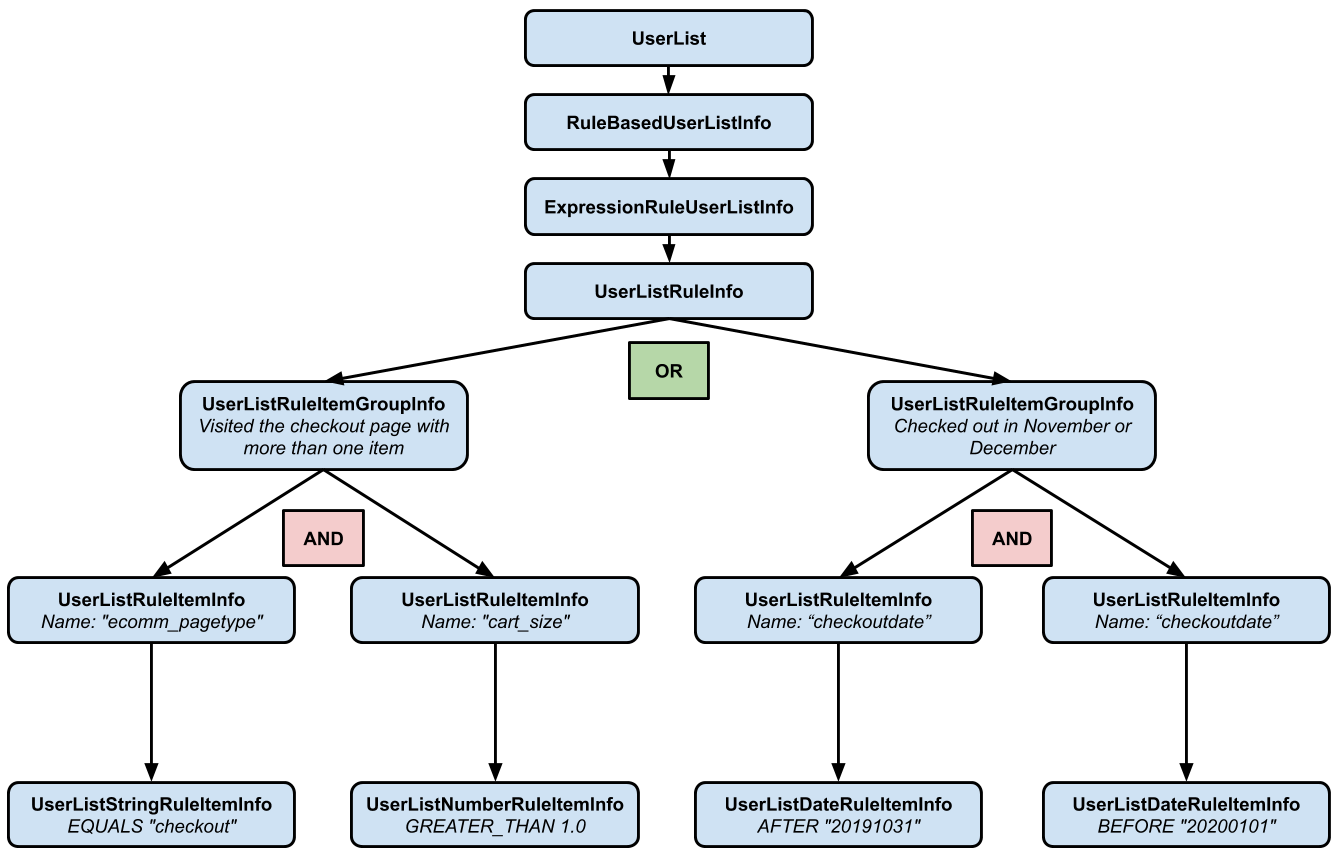다음과 같은 사용자 속성을 캡처하기 위해 여러 맞춤 리마케팅 태그 매개변수를 구성한 사이트가 있다고 가정해 보겠습니다.
event- 사이트의 페이지 카테고리(예: 결제, 장바구니 등)cartsize- 사용자의 장바구니에 있는 상품 수입니다.checkoutdate- 사용자가 체크아웃한 날짜입니다. 이 매개변수는 사용자가 실제로 구매를 완료한 경우에만 설정합니다.
장바구니에 여러 상품을 추가하고 결제 프로세스를 시작한 사용자에게 더 많은 노출을 표시하고 싶습니다. 또한 11월과 12월에 구매한 사용자를 찾고 싶습니다. 이 기간에 사이트에서 대대적인 할인을 계획하고 있기 때문입니다.
다음 규칙 중 하나를 사용하여 이 사용자 집합을 설명할 수 있습니다.
- 결제 페이지를 방문하고 장바구니에 상품이 2개 이상 있는 사용자
- 11월 또는 12월에 결제한 사용자
사용자가 카테고리 1 또는 카테고리 2에 속하는 경우 특정 광고 그룹 또는 캠페인에서 입찰가를 25% 인상해야 합니다.
사물
규칙 기반 사용자 목록의 구조를 살펴보세요. 규칙 기반 목록은 Google Ads API에서 rule_based_user_list로 표시됩니다.
다음 다이어그램은 이 사용 사례의 rule_based_user_list가 완료되면 어떤 모습일지 보여줍니다.


